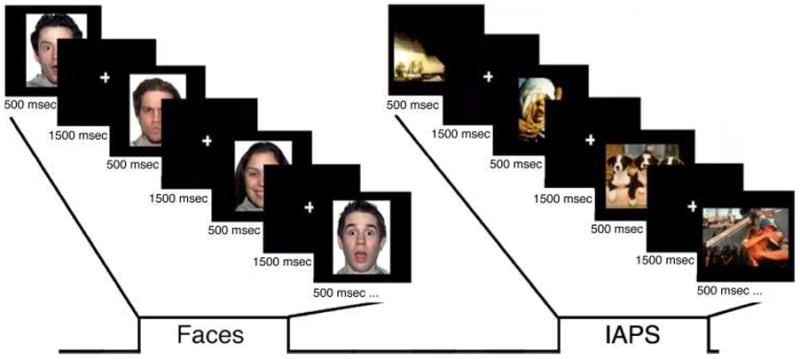Figure 1.

A depiction of the experimental design. The paradigm consisted of eight runs of four experimental blocks each: two blocks each of facial expressions and IAPS stimuli interleaved. Each block began with a brief (2000 msec) instruction statement: “valence” or “gender” (nonvalence) for the face blocks and “valence” or “social/nonsocial” (nonvalence; i.e., “Does the picture contain a person?”) for the IAPS blocks. Each block consisted of 24 images, 12 from the ambiguous conditions (e.g., surprised faces) and six from each clear valence condition (positive, negative; e.g., happy and angry faces, respectively). All images were presented sequentially for 500 msec, with an ISI of 1500 msec, in a randomized fashion for all conditions. An additional 24 trials were presented randomly within each block to provide jitter, during which a white fixation cross appeared on the screen, and 24 fixation trials were presented between each block. The order of the blocks was counterbalanced across participants.
